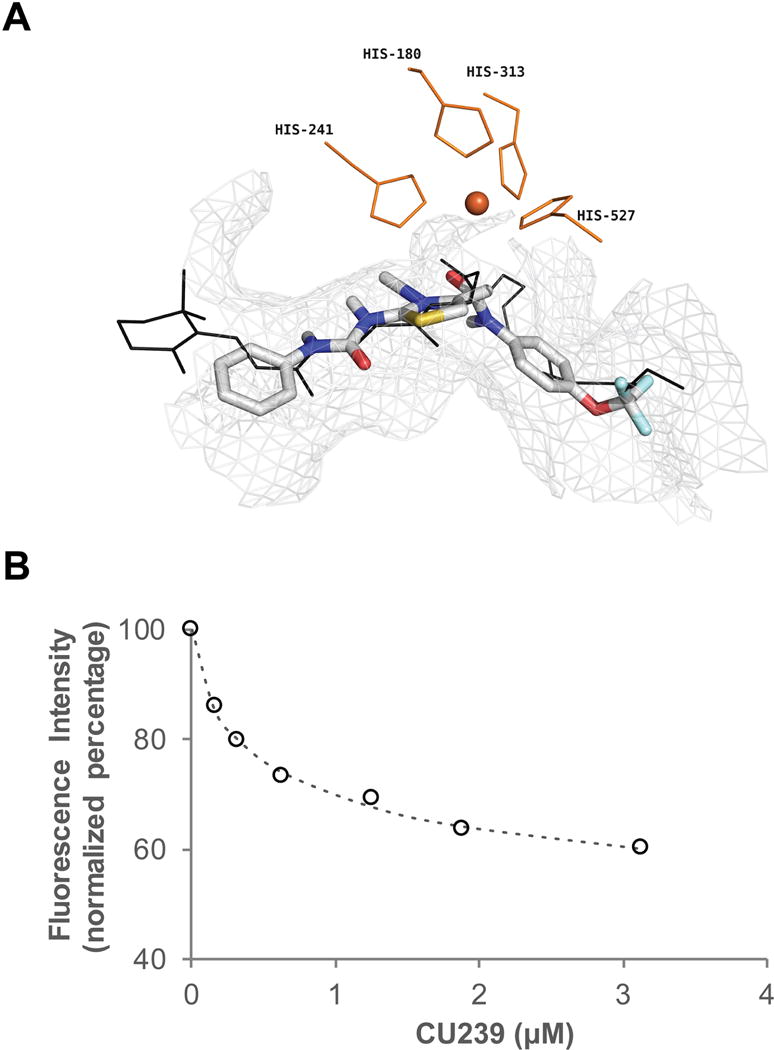Fig. 3. CU239 is able to bind RPE65.

(A) Binding pose of CU239 obtained from a Unity Model in comparison with binding of retinyl palmitate to the bovine RPE65. CU239: colored stick; Retinyl palmitate: black line. Grey mesh outlines the residues within 4Å of CU239. Shown in orange are the iron co-factor and the four histidine residues that bind iron. (B) Fluorescence measurement of binding of CU239 to RPE65. Titration of chicken RPE65 with CU239 as measured by the quenching of protein fluorescence. Excitation was recorded at wavelength 278 nm, emission at 340 nm. The titration system consisted of 2 ml of 0.1μM of RPE65 in 0.1% CHAPS in PBS, pH 7.4.
